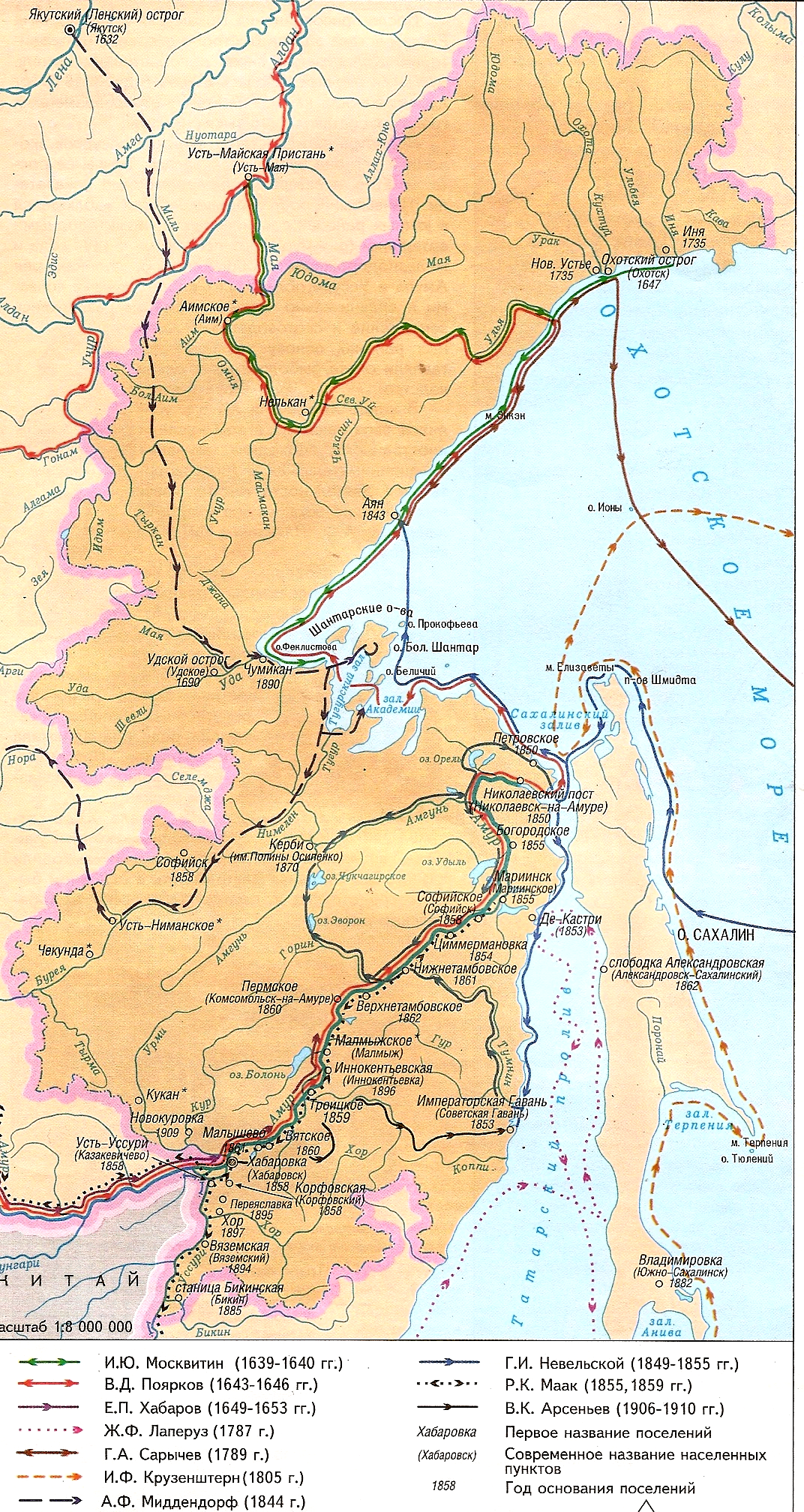
- •Сontents
- •Введение
- •Introduction
- •Unit I. Introductory part
- •1. Fill in the table:
- •2. Study the key vocabulary:
- •3. Scan the text. Political Situation in Russia in the 17th Century and Prerequisites for the Exploration of the Far East
- •4. Answer the following questions:
- •5. Complete the sentences:
- ••Moscow was occupied by ___________________________ .
- •Unit II. Movement to the far east Lesson 1. Expeditions of Ivan Moskvitin and Vasily Poyarkov
- •2. Study the key vocabulary:
- •3. Make up sentences with the key vocabulary.
- •4. Complete the sentences with the correct key vocabulary item:
- •5. Translate into English:
- •7. Scan the table. Analyze the peculiarities of the expeditions. What differences and similar features have you found?
- •9. Explain the meaning of the following expressions from the text.
- •Lesson 2. Yerofey Pavlovich Khabarov: a Successful Commercial Man and “Getter” of Russia
- •1. History test. Choose the correct variant to complete the sentences:
- •2. Read the text and explain the meaning of the word “khabar”. What does the word “khabar” mean?
- •3. Study the key vocabulary:
- •4. Match the following word-combinations with their definitions:
- •5. Make up sentences with the key phrases.
- •6. Scan the table. The Most Important Periods of y. P. Khabarov’s Biography
- •11. Find out about his Amur trip. What other trips did he undertake?
- •12. Explain why his way was shorter and better. Use maps.
- •13. Translate into Russian. Which natural riches of the Far East was Khabarov impressed by?
- •14. On your own. Use the Internet and other resources to find information about the character of y.P.Khabarov. Prove that he was a successful Russian commercial man.
- •15. Read the text and analyze all achievements of y. P. Khabarov. Explain why historians name him the “getter” of Russia.
- •Importance of Khabarov’s discoveries
- •16. Say what impressed you most in Khabarov’s fate.
- •17. Imagine you are a guide-interpreter. Make a presentation about the monument to y. Khabarov. Use the information from the text.
- •Vocabulary:
- •18. Write an essay on the following theme: “The city of Khabarovsk was named so because …”.
- •1. Study the key vocabulary:
- •2. Replace the following words and word-combinations by the synonyms:
- •3. Make up the sentences with the key vocabulary.
- •4. Scan the text and translate into Russian the sentences with the key vocabulary. Semеn Ivanovich Dezhnev
- •5. Answer the following questions:
- •6. Complete the sentences:
- •7. True or false? Write “t” if true, “f”, if false:
- •Part II
- •Vladimir Vasilyevich Atlasov
- •5. Prove that:
- •6. Answer the following questions:
- •7. Fill in the table:
- •8. Look at the map. Speak how the territory of Russia changed in the 17th century due to expeditions of famous Russian explorers.
- •9. Make a presentation about one of five famous explorers of the Far East.
- •1. Study the key-vocabulary:
- •2. Replace the following words and word-combinations by the synonyms:
- •3. Fill in the correct key word or word-combination:
- •3. Make up the sentences with the key vocabulary.
- •4. Scan the text and translate into Russian the sentences with the key vocabulary. Albazin Fortress
- •Lesson 5. Fatal Consequences of the Nerchinsk Treaty
- •Нерчинский трактат
- •9. Replace the following words and word-combinations by the antonyms:
- •10. Complete the following sentences with the correct key word or word-combination:
- •11. Make up the sentences with the key vocabulary.
- •12. Scan the text. Political Situation in the Far East
- •13. Look at the picture by a Chinese artist: “a battle for Albazin between Russian Cossacks and Daurs”. Explain what you see there.
- •14. Answer the following sentences:
- •Unit IV. Peter’s age in the far east
- •Alexey Mikhailovich and Nataliya Naryshkina
- •Alexey Mikhailovich and Maria Miloslavskaya
- •Lesson 6. Development of the Far Eastern Lands by Peter I
- •1. Study the key vocabulary:
- •2. Complete the following sentences with the correct key word or word-combination:
- •3. Translate into English:
- •4. Make up the sentences with the key vocabulary.
- •5. Scan the text. Achievements of Peter I in the Far East
- •6. Answer the following questions:
- •Lesson 7. Okhotsk: the Major Russian Port in the Pacific
- •6. Scan the text. Okhotsk Foundation
- •Lesson 8. Expeditions of Vitus Bering
- •4. Translate into English:
- •5. Scan the text.
- •Vitus Bering
- •6. Answer the following questions:
- •7. Complete the following sentences:
- •9. Translate into Russian:
- •10. Find on map №12 the places:
- •12. Give a summary of V. Bering’s life. Lesson 9. The First Steps to Explore the American Coast
- •1. Study the key vocabulary:
- •2. Explain the meaning of the following key vocabulary:
- •3. Match the words and word-combinations with their definitions:
- •4. Make up sentences with the key vocabulary.
- •5. Translate the sentences into Russian:
- •6. Scan the text. Problems with the Locals during the First Steps to Explore the American Coast
- •6. Answer the following questions:
- •Unit V. Russian america Lesson 10. Political Situation in the Pacific at the End of the 18th Century
- •Influenced the appearance of the new indigenous peoples in America.
- •2. Study the key vocabulary:
- •3. Match the following columns:
- •4. Translate into English:
- •5. Make up sentences with the key vocabulary.
- •6. Scan the text. Russian and American Frontiers
- •7. Answer the following questions:
- •8. Find in the text the sentences with the key vocabulary and translate them into Russian.
- •9. Complete the sentences:
- •Lesson 11. Functions of Russian Trade Stations on the American Shores
- •2. Replace the following words and word-combinations by the synonyms:
- •3. Match the following columns:
- •4. Find the words from the key vocabulary to match the following definitions:
- •5. Make up sentences with the key vocabulary.
- •6. Scan the text. Grigory Ivanovich Shelikhov – the Founder of Russian Business in NorthAmerica
- •7. Answer the following questions:
- •8. Write if the statement is true (t) or false (f):
- •Lesson 12.The Work of the Russian-American Company (rac)
- •Основание Российско-Американской компании
- •Vocabulary:
- •7. Make up the sentences with the key vocabulary.
- •8. Scan the text. The First Russian Joint-stock Commercial Enterprise in America
- •9. Answer the following questions:
- •16. Give a summary of the text.
- •17. A) Scan the table of persons who were the Governors of the Russian American Company. B) Find on map №16 places named by them. Governors of the Russian American Company
- •Lesson 13. Reforms of Nikolay Petrovich Rezanov in Russian America
- •1. Study the key vocabulary
- •9. Answer the following questions:
- •10. Write if the statement is true (t) or false (f):
- •Lesson 14. Decline of the rac and Sale of Russian Estates in America
- •2. Replace the following words by the antonyms:
- •6. Scan the text. Why Were the Colonial Possessions of Russian America Sold?
- •7. Answer the following questions:
- •8. Prove that the territory of Russian America was practically uninhabited.
- •11. Complete the sentences:
- •Исторические факты
- •Vocabulary:
- •Популярные мифы и заблуждения о продаже Аляски
- •1.Утверждается, что в связи с известными нарушениями договора, сделка может быть оспорена и по сей день.
- •3.В российской публицистике распространяется еще один миф, который гласит, что Аляска на самом деле была не продана, а сдана в аренду на 99 лет, но ссср по каким-то причинам не потребовал её обратно.
- •Vocabulary:
- •16. Read the newspaper article. Share your point of view about the perspectives of Russian-American business relations. From Russia with Love: Tunnel to Link Siberia and Alaska
- •Vocabulary:
- •1. What do you know about the settlement of the Amur area in the 19th century? Choose a correct answer to complete a sentence.
- •2. Study the key vocabulary:
- •3. Replace the following words with the synonyms:
- •7. Scan the text. Return of Russia to the Amur
- •7. Answer the following questions:
- •8. Complete the sentence:
- •Lesson 16. Important Discoveries of Captain Gennady Ivanovich Nevelskoy
- •3. Complete the sentences with the word or word-combinations from the key vocabulary :
- •4. Make up sentences with the key vocabulary.
- •5. Scan the text. The Life and Activities of the “Amur Admiral” Gennady Ivanovich Nevelskoy
- •6. Answer the following questions:
- •7. Translate into Russian the sentences with the key vocabulary.
- •8. Think why the first Russian ports at the Amur estuary and Sakhalin were named as Petrovsky, Nikolaevsky, Ilyinsky and Muravyovsky.
- •9. Say if the statement is true (t) or false (f):
- •10. Scan map №17. Describe the rout of the expedition of Captain g.I. Nevelskoy.
- •11. Translate an extract below. Explain what g.I. Nevelskoy guaranteed to the local population.
- •Vocabulary:
- •12. Fill in the table about the life and discoveries of Gennady Ivanovich Nevelskoy:
- •Lesson 17. The Activities of the Governor - General Nikolay Nikolaevich Muravyov- Amursky during His Reign in the Far East
- •2. Replace the word-combinations by the key vocabulary:
- •3. Match the following columns:
- •4. Make up sentences with the phrases from ex.3.
- •5. Scan the text. Nikolay Nikolaevich Muravyov-Amursky* - a Great Reformer of the Russian Far East
- •6. Answer the following questions:
- •7. Translate the sentences with the key vocabulary into Russian.
- •8. Complete the sentences:
- •Lesson 18. The First Raftings of the Russian People down the Amur River
- •5. Scan the text: Measures to Consolidate and Secure the Far East
- •6. Answer the following questions:
- •7. Translate into Russian sentences with the key vocabulary.
- •8. Complete the following sentences:
- •Дважды открытый
- •Lesson 19.Difficult Life of the First Russian Settlers
- •Амурское казачье войско
- •2. Study the key vocabulary:
- •2. Replace the following words by the antonyms:
- •3. Match the following columns:
- •4. Complete the sentence:
- •5. Make up sentences with the key vocabulary.
- •6. Scan the text. Difficult Life of the First Russian Settlers
- •6. Answer the following questions:
- •A) Описание жизни первых переселенцев Николаем Михайловичем Пржевальским
- •Vocabulary:
- •B) The “World's End” Lost in Taiga
- •1. Study the key vocabulary:
- •2. Replace the following words by the synonyms:
- •3. Make up sentences with the key vocabulary.
- •4. Complete the sentences:
- •5. Scan the text: Demand, Design and Importance of the Trans-Siberian Railway*
- •6. Answer the following questions:
- •17. Scan the articles. Prove that these educational institutions played an important role in the designing the Trans-Siberian railway. A)Khabarovsk Railway College of the Ministry of Railways
- •Far Eastern State Transportation University
- •18. Read the text. Speak about the importance of the Amur Bridge for the Far East. Amur Bridge
- •1. Study the key vocabulary:
- •2. Match the following columns:
- •3. Make up sentences with the phrases from exercise 2.
- •4. Translate into English:
- •5. Scan the text: Prerequisites for the Rapid Growth and Decay of Some Far Eastern Territories
- •6. Answer the following questions:
- •7. Translate into Russian the sentences with the key vocabulary.
- •8. Complete the following sentences:
- •The First Freemen of Khabarovsk
- •17. On your own. Use the Internet and other sources to make a list of the most popular honorable citizens of modern Khabarovsk.
- •18. A)Scan the text: Merchants’ Khabarovsk
- •19. Read the text. Династия Плюсниных
- •Vocabulary:
- •Vocabulary:
- •Николай Иванович Тифонтай
- •Vocabulary:
- •Торговый Дом «Кунст и Альберс»
- •Vocabulary:
- •Lesson 22. Contribution of Governors-General to the Development of the Far Eastern Lands
- •Protected person b) maker of somebody’s ideas in reality c)successor
- •5. Scan the text: General - Governorship in the Far East
- •6. Answer the following questions:
- •6. Speak about the Governors-General of Eastern Siberia.
- •7. Study the table. Which Governors-General are familiar to you? Why?
- •8. Explain why the initials of some Governors-General are italicized.
- •9. Read the article about Nikolay Ivanovich Grodekov. Nikolay Ivanovich Grodekov (1843 – 1913)
- •Andrey Nikolayevich Korf (1831-1893)
- •14. Prove that Andrey Nikolayevich Korf was a worthy person and had not got the title of the Honorable Citizen of Khabarovsk in vain.
- •15. Write the translation of the text. Николай Львович Гондатти (1863—1945)
- •Lesson 23. Main Discoveries of Russian Scientists in the Far East
- •In the 19th –20th Centuries
- •Activity of the Priamurskiy Department of the Imperial Russian Geographic Society
- •6. Answer the following questions:
- •7. Translate into English. Исследование Сибири и Дальнего Востока
- •8. Speak about the importance of the scientific research for the development of the Far East.
- •9. Scan the texts. Richard Karlovich Maack (1825-1886)
- •Alexander Fedorovich Middendorf (1815–1894)
- •Karl Ivanovich Maximowicz (1827 - 1891)
- •Plants named after Maximowicz
- •Vladimir Klavdievich Arsenyev (1972 - 1930)
- •Arsenyev’s family home in Vladivostok has been made into a museum. The town of Arsenyev, located in Primorskiy Territory, was named after him. Dersu Uzala
- •Венюков Михаил Иванович (1832-1901)
- •11. Make up a table of scientific discoveries in the Far East.
- •1. Scan the text. The History of Khabarovsk
- •5. Give a key sentence to each paragraph and retell the text.
- •Герб города Хабаровска
- •Vocabulary:
- •11. Have a look at photos of old Khabarovsk on pages 163-171. Can you guess which modern buildings are these?
- •12. Make a presentation or a slide-show about several old and modern buildings of Khabarovsk. Compare them and tell about differences.
- •Lesson 25. The Importance of the Amur River for the Region
- •1. Scan the Statistical Data. Name the peculiarities of the Amur River. Statistical Data:
- •2. Study the key vocabulary:
- •3. Match the following columns:
- •4. Make up sentences with the word-combinations from ex.3.
- •5. Translate into English:
- •6. Scan the text: Amur River History
- •Economy of the Amur Basin
- •Major Amur tributaries are:
- •7. Answer the following questions:
- •8. Translate sentences with the key vocabulary into Russian.
- •9. Write all meanings of the word “Amur”:
- •10. Write the main dates of the Amur history and explain the events:
- •11. Speak about the history of the Amur River.
- •12. Fill in the table about the resources of the Amur River:
- •13. Watch map in the text and map №23. Determine the location of the the Amur River, its tributaties, and cities, located on its banks.
- •14. Read the articles.
- •Viktor Ishayev: “China Threatens Khabarovsk Region with New Ecological Catastrophe”
- •Китай пообещал закрыть все угрожающие загрязнением Амура заводы
- •Amur Needs un Clean-up Aid
- •15. Analyze the articles and make a list of main ecological problems of the river and measures to solve them.
- •16. Write an essay on the following topic:” Father Amur is the River of life in the Far East”. Lesson 26. Far Eastern Federal District
- •1. Scan the information.
- •Statiscical Data:
- •4. Speak about the presence of the Chinese at the Territory of the Far East. Is their presence here really dangerous?
- •5. Read the text. Khabarovsk Territory
- •Description of the flag of Khabarovsk Territory
- •Description of the Coat of Arms of Khabarovsk Territory
- •History
- •Geography
- •Economy
- •Demographics
- •Places Attractive for Tourists
- •Welcome to the Russian Far East!
- •10. Write an essay on the following theme: “What will happen to the Far East in 20 years?”
- •Vocabulary list
- •Appendix
- •Map № 8. Stanovoy Range
- •Map № 16. Russian America
- •Seminar № 2
- •Seminar № 3
- •Old buildings of khabarovsk
- •Reference sources
- •Www.Wikipedia.Org
Appendix
*Ivan IV Vasilyevich (known in English as Ivan the Terrible (= inspiring fear) (August 25, 1530, Moscow – 28 March 1584, Moscow) was Grand Prince of Moscow from 1533. The epithet "Grozny" is associated with might, power and strictness, rather than poor performance, horror or cruelty. Ivan oversaw numerous changes in the transition from a mere local medieval nation state to a small empire and emerging regional power, becoming the first Tsar of a new more powerful nation, acknowledged as "Tzar of All Russia" from 1547.
*Yermak Timofeyevich (his last name, if any, is unknown) (born between 1532 and 1542 – August 5 or 6, 1585), a Cossack leader, Russian folk hero and explorer of Siberia. His exploration of Siberia marked the beginning of the expansion of Russia towards this region and its colonization.
*Boris Fyodorovich Godunov (born in 1551 – 23 April 1605) was de facto regent of Russia from 1584 to 1598 and then the first non-Rurikid tzar from 1598 to 1605. The end of his reign saw Russia descending into the Great Tumult.
*Mikhail Fedorovich Romanov Russian Tzar (Jul. 12, 1596 - Jul. 13, 1645). He reigned as Tzar of Russia from 1613 to 1645. He was elected Tzar by the Russian nobility, the Boyars, on February 7, 1613. He was the first Romanov to be placed on the Throne of Russia.
*Veliki Ustug (Great Ustug) – an ancient Russian town, the contemporary of Vologda and Moscow, founded in 1147 at the junction of two rivers Suhona and Yug, the place, where the largest river of the European North – Northern Dvina - springs from.
*Taymyr Peninsula is a peninsula in Siberia that forms the most northern part of mainland Asia. It lies between the Yenisei Gulf of the Kara Sea and the Khatanga Gulf of the Laptev Sea in Territory, Russia.
*Albazino is a village in Skovorodinsky District of Amur Oblast, Russia, noted as the site of Albazin, the first Russian settlement on the Amur River.
*Sophia Alekseyevna ((September 17 (27), 1657 – July 3 (14), 1704) was a regent of Russia (1682-1689) who allied herself with a singularly capable courtier and politician, Prince Vasily Galitzin, to install herself as a regent during the minority of her brothers, Peter I and Ivan V. Sophia was the third daughter of Tzar Alexey I of Russia by his first wife, Maria Miloslavskaya. After the death of her full brother Fyodor Alekseyevich on April 27, 1682, Sophia unexpectedly entered Russian politics, trying to preclude her young half-brother, the 10-year old Peter Alekseyevich, and his Naryshkin relatives, from inheriting the throne.
*Buffer zone is any zonal area that serves the purpose of keeping two or more other areas or countries distant from one another. A buffer zone is formed to create an area of separation between disputing or belligerent forces and reduce the risk of renewed conflict.
*Peter I (Great) or Pyotr Alexeyevich Romanov (9 June 1672 – 8 February 1725) ruled Russia and later the Russian Empire from 7 May 1682 until his death, jointly ruling before 1696 with his weak and sickly half-brother, Ivan V. Peter I carried out a policy of modernization and expansion that transformed the Tzardom of Russia into the 3-billion acre Russian Empire, a major European power. Peter I had two wives with whom he had 11 children. His eldest child and heir, Alexey, was suspected of being involved in a plot to overthrow the Emperor, and died in Petropavlovskaya fortress, possibly due to injuries sustained during torture.
*Stretelets – (literally "shooters") were the units of Russian guardsmen in the 16th - early 18th centuries, armed with firearms. Russian military corps established in the middle of the 16th century that formed the bulk of Russian army for about 100 years, provided the tzar’s bodyguard, and, at the end of the 17th century, exercised considerable political influence. Living in separate settlements (slobody), they performed police and security duties in Moscow and in the border towns where they were garrisoned; they often also engaged in trades and crafts.
*The Bering Strait is approximately 53 miles (85 km) wide, with an average depth of 98–160 feet (30–49 m). It connects the Chukchi Sea (part of the Arctic Ocean) in the north with the Bering Sea (part of the Pacific Ocean) in the south. It is one of the biggest of its kind. Although the Cossack Semen Dezhnev passed by the strait in 1648, it is named after Vitus Bering, a Danish-born Russian explorer who crossed the strait in 1728.
*Karl Robert Nesselrode, also known as Charles de Nesselrode, (Lisbon, Portugal, December 14, 1780 - March 23, 1862) was a Baltic-German Count and a Russian diplomat and a leading European conservative statesman of the Holy Alliance.
*Nikolay Nikolayevich Muravyov-Amursky (August 11 , 1809—November 18, 1881) was a Russian statesman and diplomat, who played a major role in expansion of the Russian Empire to the Pacific Ocean.
*Page Corps (Russian: Пажеский корпус) was a privileged military establishment in Imperial Russia, which prepared aristocratic children for military service. After the Russian Revolution the Page Corps was replaced by the Suvorov Military School.
*Russo-Turkish wars were a series of wars fought between the Russian Empire and the Ottoman Empire during the 16th, 17th, 18th, 19th, and 20th centuries. It was one of the longest conflicts in European history.
*Ubykh people (Убы́хи) are a group who spoke the Northwest Caucasian Ubykh language, and its last speaker finally died in 1992. The Ubykh used to inhabit an area just northwest of Abkhazia in the Caucasus. They were probably one of the populations to inhabit the ancient nation of Colchis. The Ubykhs were semi-nomadic horseback people.
*Trans-Siberian Railway or Trans-Siberian Railroad (Транссибирская магистраль, Транссиб in Russian,) is a network of railways connecting Moscow and European Russia with the Russian Far East provinces, Mongolia, China and the Sea of Japan. The construction started on May 19th, 1891 and it was finished on October 5th, 1916 when the bridge across Amur River started to operate.
* Dalny, Lueshun, and Port Artur. In the late 19th century, the Russians acquired this area as a concession in 1898 and set about constructing the port of their dreams and an alternative to the only partially - ice-free port of Vladivostok. The Japanese navy attacked Port Artur in February 1904, crippling and blockading the Russian fleet. Soon the port passed into Japanese hands and the Japanese completed the port facilities in 1930. In 1945, the Soviet Union came back to that place for more than 10 years. Today the city Dalian is the costal city. It has been known by several names: Dalny, Lueshun, and Port Artur. It has the largest harbor in the northeast and is also one of the most prosperous cities in China. Crossed by old colorful trams, the city exhibits some wonderful architecture and has refreshing acres of grass and lawns, beaches and parks.
*Governor-general, also known as governor general, is a vice-regal representative of a monarch in an independent realm or a major colonial circonscription. Depending on the political arrangement of the territory, a governor-general can be a governor of high rank, or a principal governor ranking above "ordinary" governors.
MAPS:
Map № 1. Expedition of V. Poyarkov to the Amur River (1643-1646)
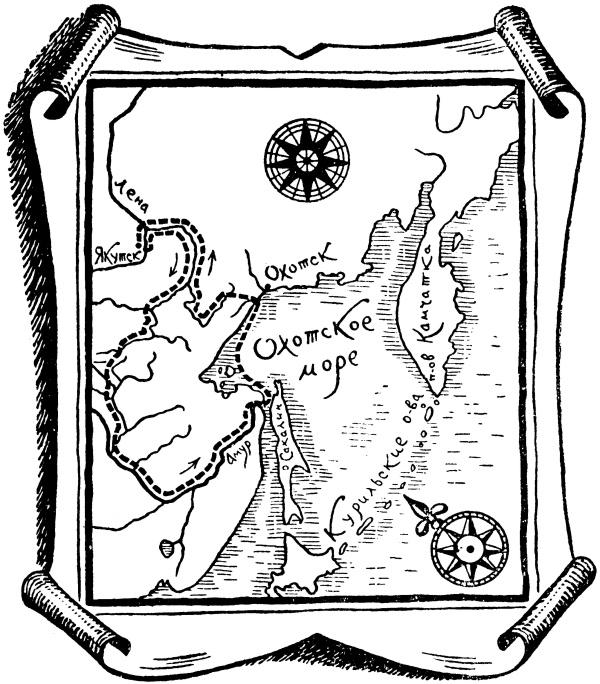
Map № 2. Expeditions of V. Poyarkov and Y. Khabarov

Map №3. Routs of V. Poyarkov and Y. Khabarov

Map № 4. Location of Veliki Ustug
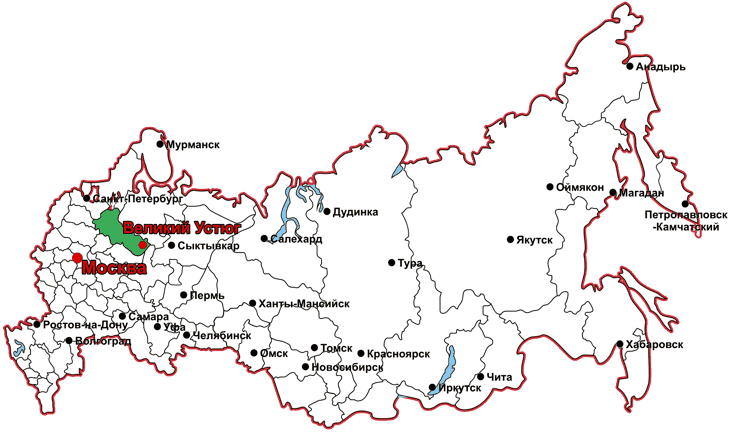
Map № 5.Taymyr Peninsula
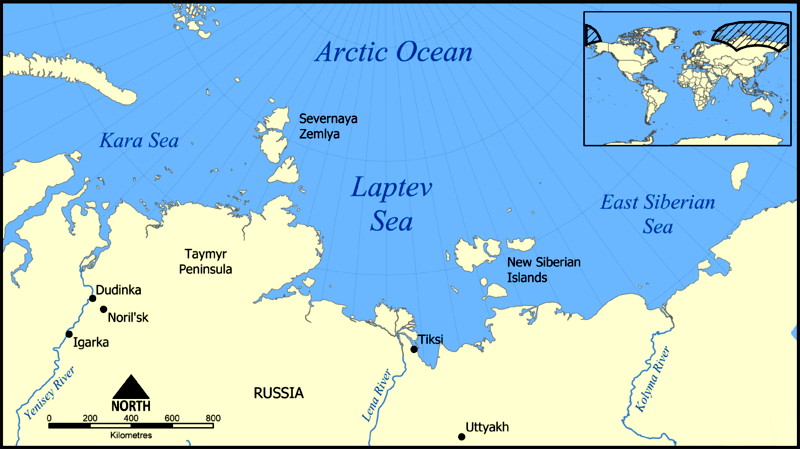
Map № 6.1. Expedition of Semen Dezhnev
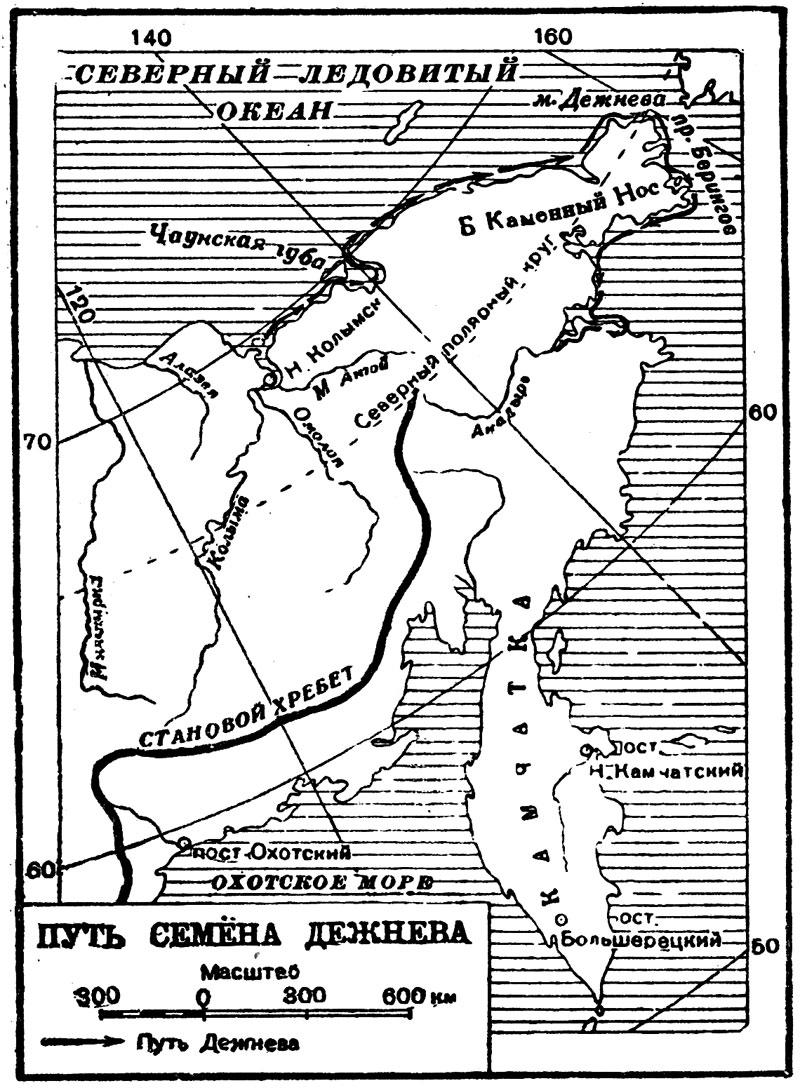
Map № 6.2 Kamchatka Expedition of Vladimir Atlasov
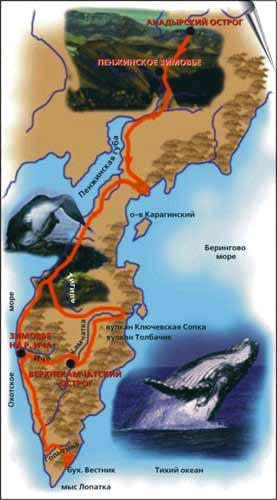
Map № 7. Exploration of the Far East in the VII-XXthcenturies
